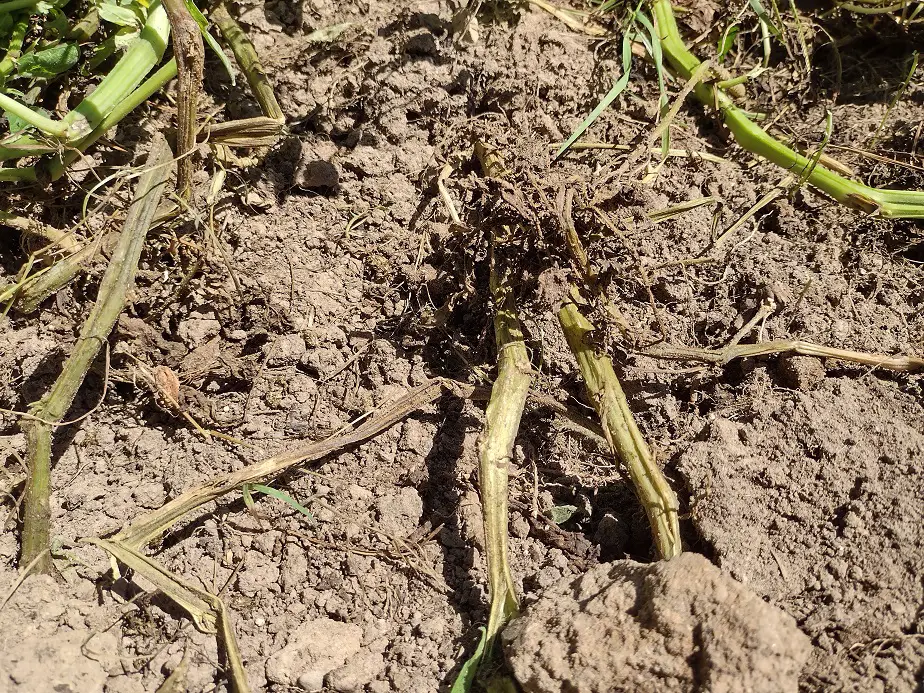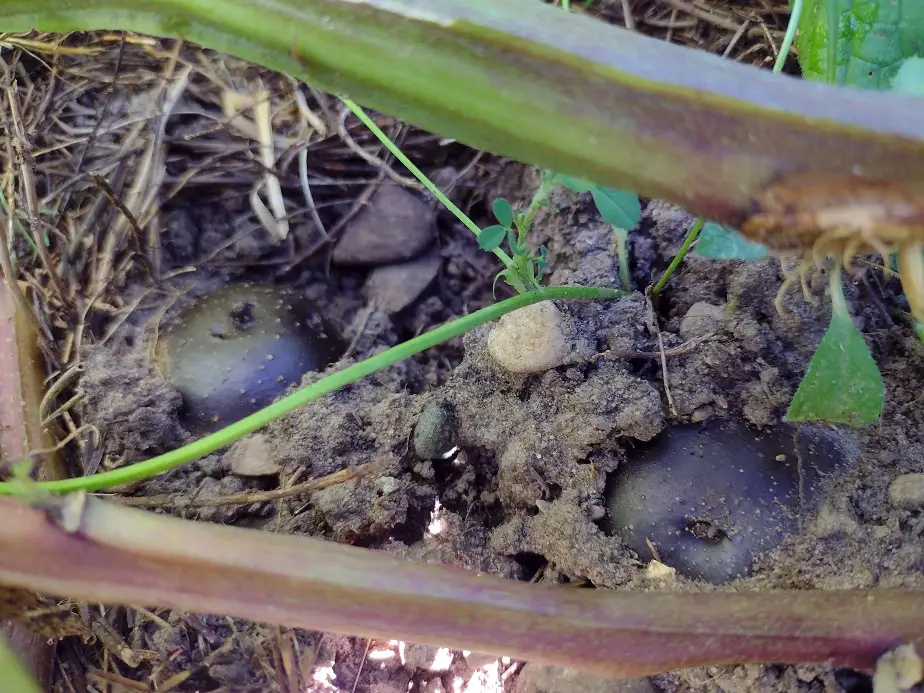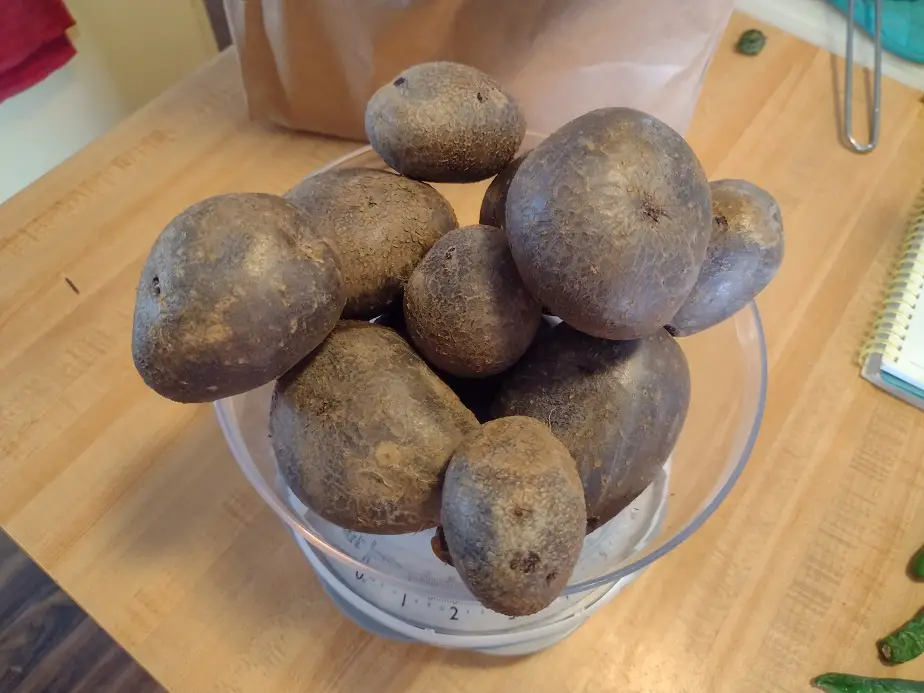Potatoes are an important crop for us. They are the earliest producing high-calorie crop we grow, but what about planting them late?
Potatoes can be planted early-mid summer in cool regions. They will grow fast and yield well as long as the weather doesn’t get too hot. Potatoes can be planted as late as June and early July and still get a full harvest before winter. Potatoes need 90 to 110 days before frost to fully mature.
Planting Potatoes in the Summer
If you live in an area with an average temperature below 90 degrees, potatoes can be planted in the summer. In Michigan, July is the hottest month of the year, but the average high temperature is only 82 degrees in my area. I can plant potatoes in the summer as long as I still give them enough time.
I can plant potatoes in the first two weeks of July and still get a fairly full harvest, as long as I select the right variety. It needs to be a short-season variety and it should be a more drought tolerant one too. There are a few I like that would do very well.
There are some struggles with planting and growing potatoes in the summer. There are also some pretty nice advantages. The first benefit is that they sprout faster and really take off. When you plant potatoes in cold weather, they like it, but they grow soo slow until the soil warms up a bit.
You will also lose fewer seed potatoes. If you plant in the spring, there are usually a few potatoes that don’t emerge. Usually, it’s because they got wet and just rotted in the soil. That’s very unlikely in the summer. The soil is usually less wet and soggy.
And the best benefit of planting potatoes in the summer is pests or a lack of them. Most potato pests are early season problems. The Blister Beetles, the Colorado Potato Beetle, the 4-Lined Plant Bug; they emerge from the soil in late spring or early summer, usually late June-early July around here.
Those types of bugs, when they are a problem, are usually a big problem for a few weeks then they go back into the soil. One old-timer recommended I plant my potatoes in July to avoid the potato bugs. I think he was on to something.
The problems with planting in the summer are mainly heat and drought. Excessive heat prevents potatoes from getting big. you can get some very crappy yields if you plant grow potatoes during a hot summer. The other problem is drought. Potatoes need consistently moist soil to grow and swell up.
Growing potatoes in dry soil is worse than growing them in without any fertilizer. They just won’t do. I panted and grew potatoes in some very dry soil this year and they were depressing.
I planted some Red Norlands next to my Jerusalem artichokes, a type of perennial sunflower. We had an early summer drought and my sprinkler didn’t reach that area. The potatoes died off and I dug them up to see about one small potato per plant. I got 6-10 big potatoes each from my watered Red Norlands.

What is too Hot for Potatoes?
Temperatures above 86 will stop green growth and temperatures above 95 will stop root growth in potatoes. An average daytime temperature over 85 degrees during the primary growth stage, the first 2 months, will cause poor growth and a low yield for potatoes.
Everybody says that potatoes are cool weather plants, but what exactly does that mean? Well, the growth of the plant and the formation of tubers are regulated by unique plant growth hormones. Those hormones are temperature sensitive, being produced mostly in temperatures between 45 and 85 degrees.
The highest amount is produced between 62 and 64 degrees. Potatoes have a growth scale to them. Pretty much all varieties grow most of their bulk in the first 60 days, after that, the tuber growth slows down. You really want to try and keep the soil cool during that stage.
Summer potatoes should be planted fairly close together to form a good shade cover over the soil. Plant them no further than 12 inches apart, and no more than 2 feet between rows. I’d be tempted to go 18 inches between rows for summer planting, just to really shade the soil.
Be sure the soil has plenty of water. Misting plants with cool water during the afternoon heat will help them deal with summer temperatures. It also may be smart to plant them in a location with a bit less afternoon sun. Planting on The east side of a shed or wooden fence will help them keep cool.

Best Potatoes for Summer Planting
According to a Canadian study, Eramosa, Chieftain, AC Belmont, and Superior all perform slightly better in the heat than most varieties. Red La Soda is another somewhat heat-resistant potato variety. In hot climates, short-season potatoes are easier to manage and keep cool.
There are no potato varieties that do well in heat, just some that do slightly better. If you are in the southern half of the US, summer planting probably isn’t for you. It can be done under skilled professional management, but boy it’s tricky and still yields low.
When is too Late to Plant Potatoes?
It’s too late to plant potatoes when there are less than 90 days before either a frost or extreme heat. In cool climates, we plant as late as July. But, in hot areas, potatoes need to be planted in early spring and in the fall.
In cold areas, up to USDA zone 5a, potatoes can be planted in the fall and overwintered for a late spring harvest. If you want to plant and grow them in the same year, take a look at the days to maturity of a few varieties you like, add 2 weeks in case they grow slow, and count back from the first frost date.
Remember, potato vines and leaves grow in temperatures between 45 and 85 degrees, and the tubers will grow between 50 and 90 or so. But, the warmer it is, the less growth will take place. There’s no replacement for planting potatoes in the cool spring and letting them sprout in 45-degree weather.
Potatoes in the cool season just grow so well and yield such a nice crop. But, it’s nice to get a second harvest in the year because even if it’s not a high-yielding harvest, it’s still another harvest you wouldn’t have had. Summer planting potatoes for a fall harvest can really help you grow enough food.
A big part of self-reliance and sustainability is knowing how to do more with what you have. I planted potatoes in April, May, and June this year. I’m probably going to plant more this fall, before the freeze-up for an early crop next spring. For us, multiple plantings is a way to increase our food security.
Related articles:

